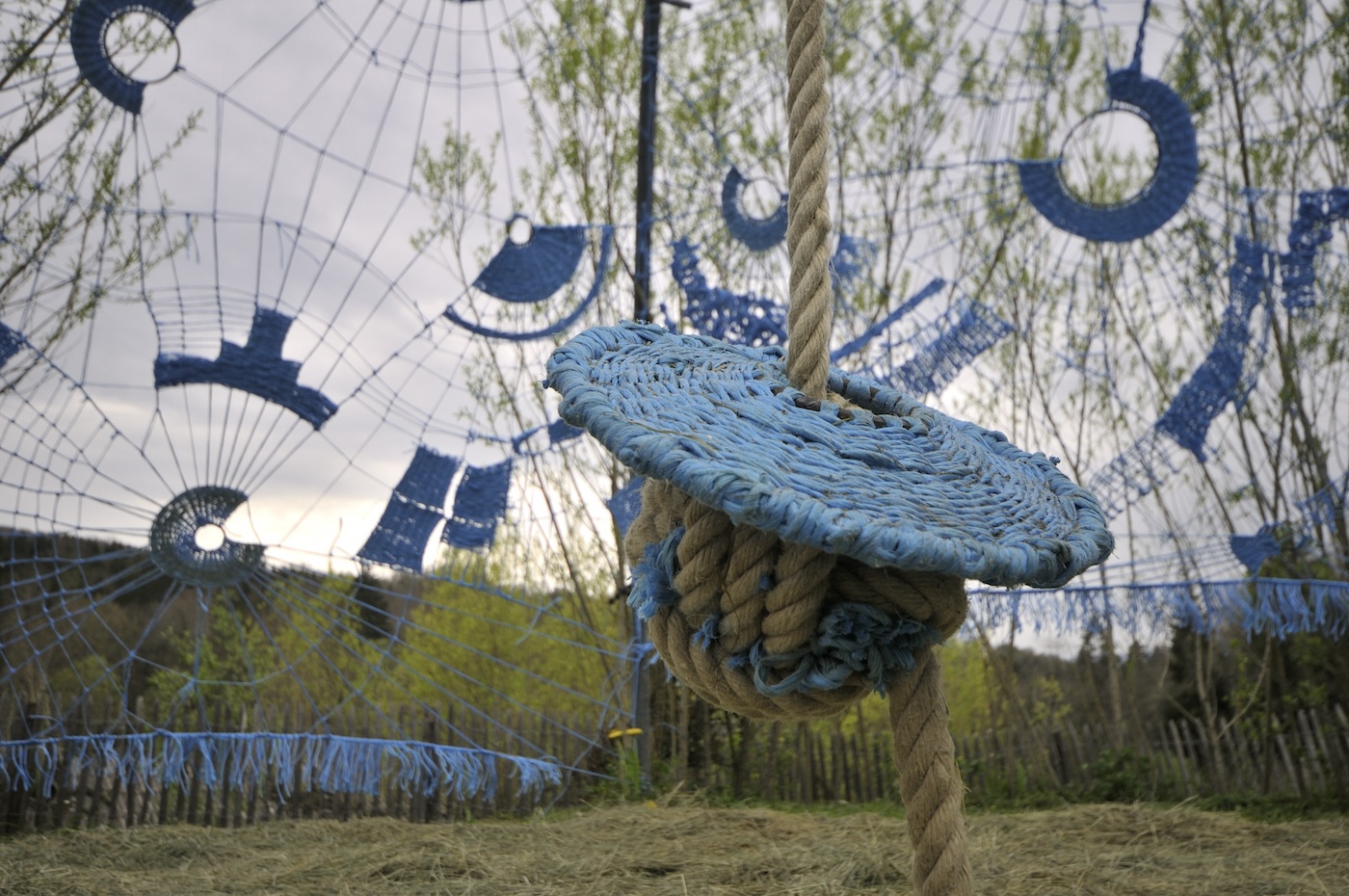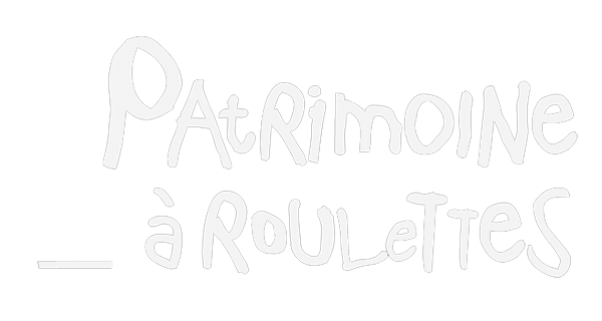Eco-art objectives
- raise awareness of the fragility of nature and the need to protect it ("educational" dimension)
- provoke a reaction in the spectator: provoke thought, encourage movement, reaction (political dimension)
- reveal the links between nature and humanity
The means to act
To develop these objectives, artistic practice is combined with ecological action such as :
- protecting or restoring the environment
- raising awareness and informing the public about climate and environmental issues
- create new environments more conducive to maintaining a balance between man and nature
- recycle and reuse rather than "consume" materials
- Eco-artistic practice needs to be visible through its positioning in public spaces or places that are visited. It is not a confidential art form.
- In its practice, ecological art will obviously ensure the greatest respect for nature and avoid "attacks on the site".
- Another element that contributes to the approach is making sure that the local offer is used, taking into account the local environment and blending in to encourage reflection.
Eco-art is distinct from "Land art", which traditionally aims to develop works in and with nature. These practices are based on a different philosophy. Using nature or natural materials to produce a work of art does not necessarily imply an awareness of ecology. On the contrary, a number of "Land artists" have been criticised for coming into conflict with the environment by damaging it in the process of their creations. However, the boundary between these two approaches is not watertight or categorical: some land artists also have an ecological aim in mind.
Eco-art, like Land art, can be practised in a natural environment, but also in an urban context. It is often rooted in everyday life, because it aims to engage with the public, who are sometimes invited to take part in the creation of a work.
The words to say it
A question of vocabulary: eco-art, ecological art and anthropocene art are relatively equivalent terms. Some people put subtle nuances into them, but this discussion is not the object of this text. As part of the Green Artist project, we use one term for the other. In developing our practice, we have drawn heavily on the ideas of Paul Ardenne.
A few milestones..
Today, eco-art is already the fruit of the commitment of many artists to preserving eco-systems and questioning the ways in which we inhabit these spaces. These artists are also questioning artistic production itself and its impact on environmental issues. Below are some of the key works and artists involved in this approach.
Josef Beuys
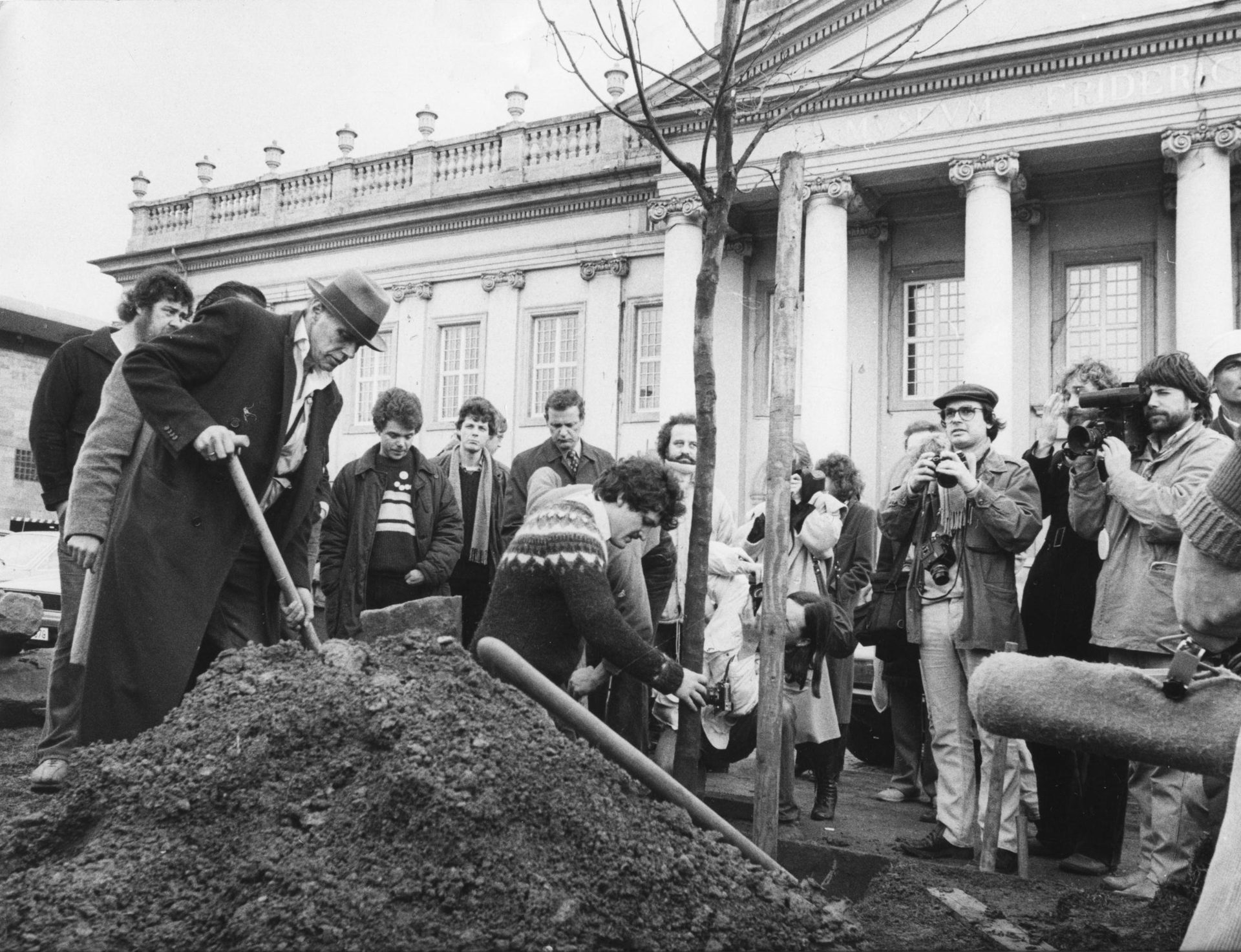
7000 oak trees 1982
It is an evolving ecological sculpture made up of planted trees, each accompanied by a basalt column. The first oak tree was planted in front of the Fridericianum Museum in Kassel in 1982. With this action, Joseph Beuys wanted to "sound the alarm against all the forces that are destroying nature and life. An action of this kind is therefore intended to draw attention to the transformation of the whole of life, of the whole of society, of the whole ecological context...".
He clearly invited the public to participate in his creation. The work continued throughout the artist's life and after his death, thanks to the "Beuys Acorns" that grew from the oak trees planted initially. The pile of basalt columns diminishes over the years.
Isaac Cordal
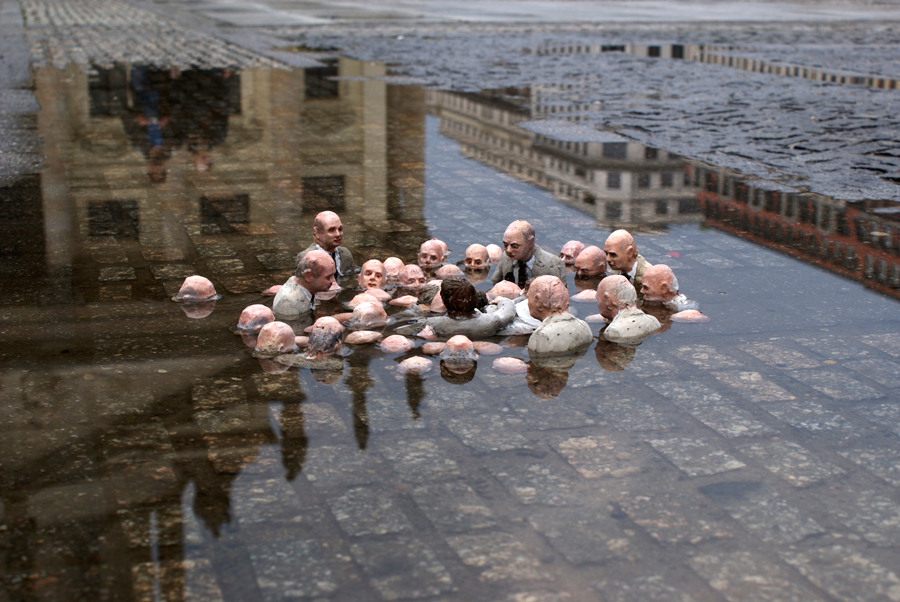
Follow the leaders 2011
Isaac Cordal sculpts and paints small figures in cement. He installs them in public spaces to draw attention to climate issues. He walks around and photographs his little men in various symbolic places to draw attention to environmental and climate issues. His aim is to alert both decision-makers and the general public.
Minervas Cuevas Idrocarburos
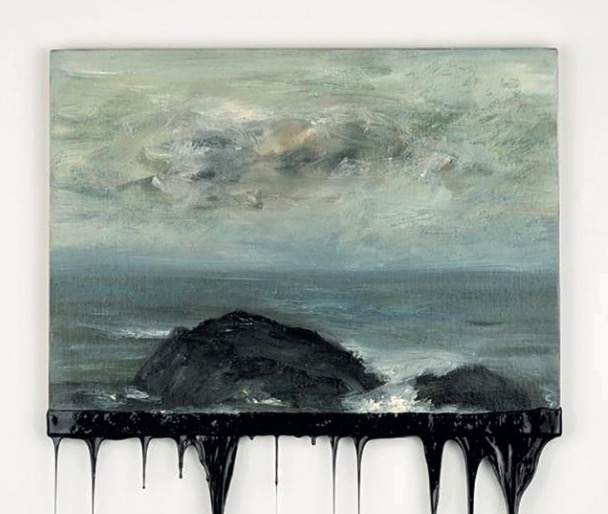
Marine, from the Idrocarburos series 2014
Through his work, Minervas Cuevas reveals, among other things, the pollution of seas and oceans by oil spills. "She doesn't just 'represent' the phenomenon, she immerses her works in real tar so that they give off a smell and provoke a reaction of withdrawal or questioning in the viewer: successful eco-art." (Paul Ardenne - Un art écologique)
Tomas Saraceno
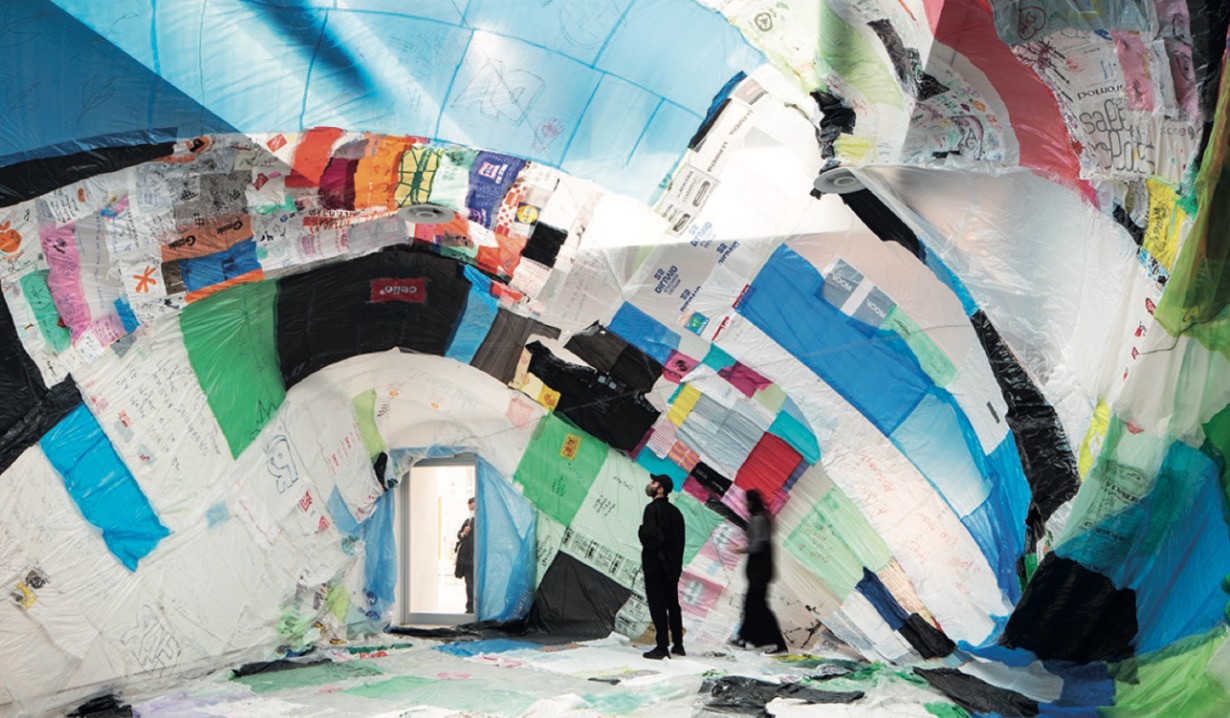
Museo Aero Solar 2009
This Argentinian artist has developed various works linked to our aerial environment. His subjects evoke the earth's atmosphere: Aerocene, made from plastic bags, is one example. "The Aerocene, "a sculpture with a message for humanity everywhere, to change the world. It can fly without a drop of fossil fuels, hydrogen, helium and without batteries or solar panels, it is inflated with air, lifted by the sun and moves by the wind". I thought, "Why not live differently, think differently, create a new word that says it, a work that shows it?"
Nicolás García Uriburu
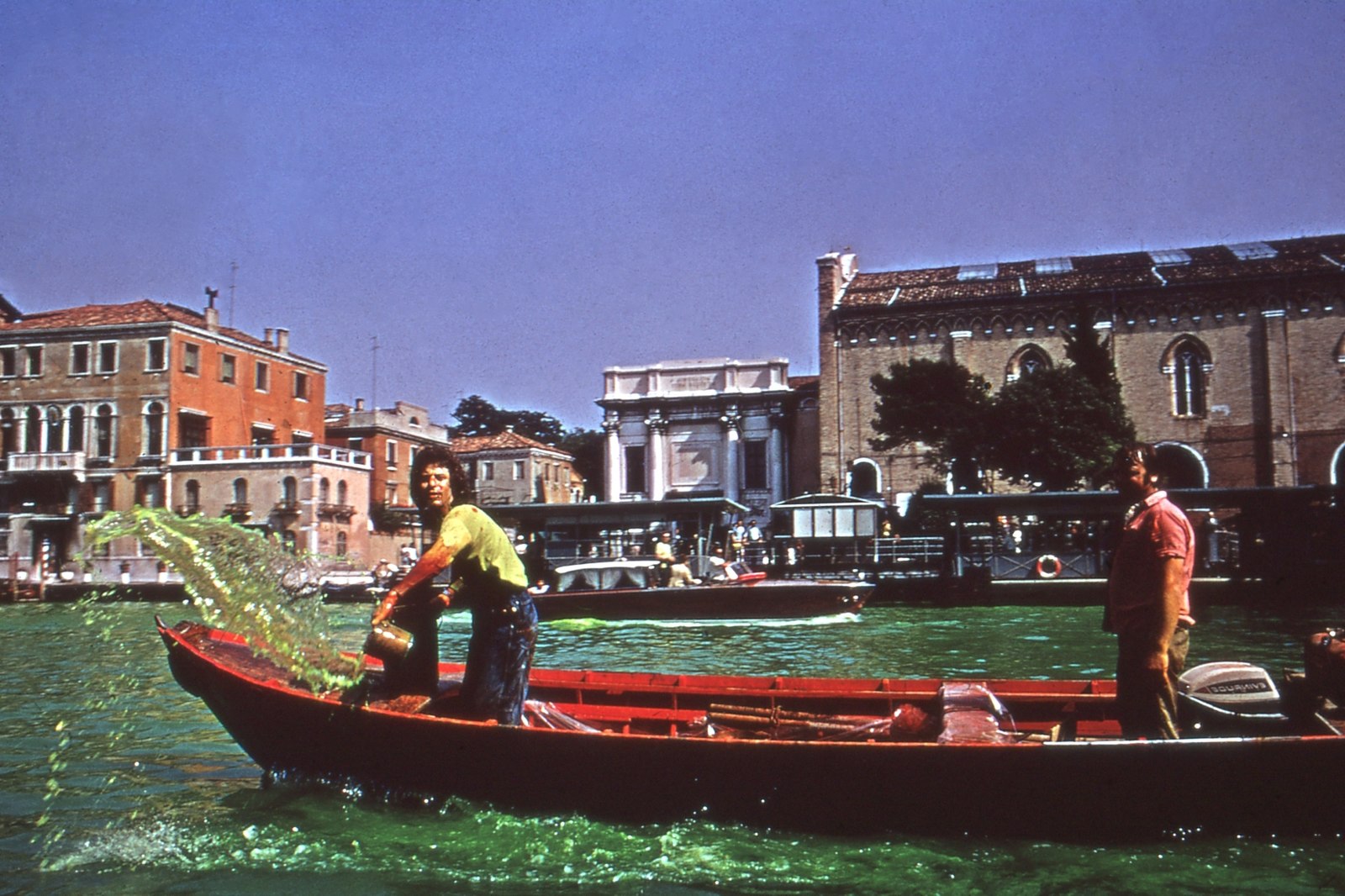
Coloration of the Grand Canal Venice, 1968
Garcia Uriburu is considered a pioneer of this movement. In June 1968, he dyed the waters of the Grand Canal in Venice fluorescent green to draw attention to man's impact on water pollution. Purists rest assured that he used fluorescein, a dye that is totally harmless to the environment and disappears in a day. Ecological issues have come to occupy an increasingly important place in our society, and in the thinking of many artists. From the 1990s onwards, these artists have developed an "activist" art that aims to denounce, alert and raise awareness.
